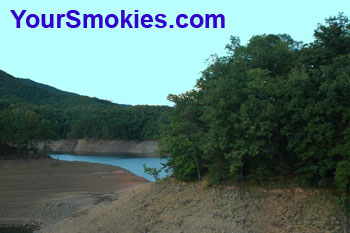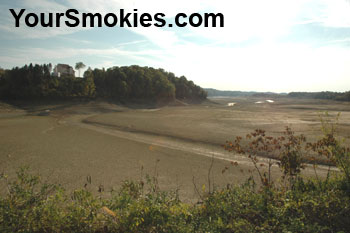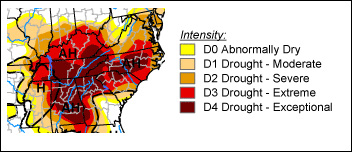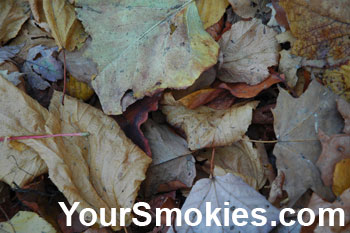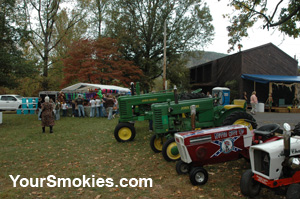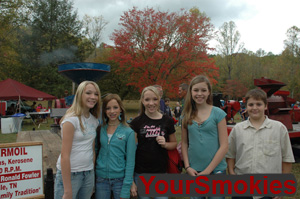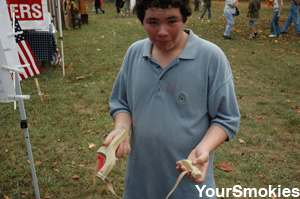The Great Smoky Mountains National Park is the driest it has been in more than 100 years and it doesn't look like that will change soon. The severe drought is affecting springs, creeks, streams, rivers and reservoirs and the plants and animals that depend on the precious water they provide.
Surrounding towns and cities are imposing water restrictions and conservation measures but these alone may not be enough. Day by day as this drought continues private wells are drying up or going bad and more homes and businesses are having deeper wells being drilled in an effort to find enough water to sustain the household or business.
Pictured above on the left is the Fontana Lake area in Fontana North Carolina which is at the south end of the National Park and on the right is Douglas Lake that is just north of the park in Sevierville and Dandridge Tennessee. Not only do these lakes provide water but their dams generate hydroelectric power which serves the Smoky Mountain Region.
While these lakes are normally lowered in the wintertime by the Tennessee Valley Authority (TVA) by purposely letting water through the spillways of the dams, there is obviously no need to do so this year.
As seen by the chart above, not only are the Smoky Mountains of North Carolina and Tennessee affected by this year's drought, but large sections of the continental US are as well. Clicking on the map above will open a map of the drought effects as well as those regions not effect in the entire United States including Alaska and Hawaii.
Businesses as far north as Vermont are complaining the this years 2007 fall leaf season is coming late and is not as showy as normal with many trees turning brown before reaching the vibrant read, pinks and peach colors of most years.
Experts blame the lack of moisture on the phenomena and show the clear correlation in the past few years' weather warmer dryer weather and the decline in some of the forests natural food stock production for wild animals and farmed crops.
A direct effect of the drought is clearly seen in the Great Smoky Mountains National Park where normally vibrant lush creek and stream beds have been dry for months. Fishermen are working hard to find fish and obviously so are the National Parks inhabitants such as Black Bear, raccoons, birds, predatory fish and a host of other animals that depending on aquatic creatures to sustain them.
Groups such as Friends of the Smokies worked hard with a Brook Trout restoration project and between the loss of Eastern Hemlock Trees that normally shade streams to keep them cooler and help maintain moisture in the important breeding areas for fish due to an invasive pest called the Hemlock Woolly Adelgid and the current drought some of their intense well meaning effort may be for naught.
Further evidence of the drought in the Great Smoky Mountains National Park is the fact that there is a 23 mile stretch of the Appalachian Trail (AT) where there is virtually no water for backpackers and campers between the Derrick Knob Shelter and the Fontana Dam.
There are also backcountry campsites and shelters in the national park that are dry: sites 4, 5, 6, 7, 16, 21, 26, 35, 42, 113, and the hikers shelters: Double Spring Gap, Mollies Ridge, Russell Field Silers Bald and Spence Field.
As the drought continues more campsites and shelters may run dry and even with sites that have water a quart sized bottle may take 5 or more minutes to fill.
Fruits, nuts and vegetation are also sparser than normal which can lead to a difficult winter for animals that depend on these natural food stocks. Black Bears in the GSMNP are normally active in the autumn season gathering up and eating as much food stocks as possible so that they may make it through the winter where traditionally they are not active and may or may not hibernate through the winter.
While tourists love the blue skies and nice warm, dry weather we are experiencing in the Smoky Mountains of North Carolina and Tennessee, we locals are praying for a break with some sustained moderate volume rain. Heavy rainfall will just run off causing erosion and flooding but if the rain volume is relatively light and lasts for a while it can percolate better into the aquifers.
This year's drought in the Smokies won't be forgotten by locals residents and anyone visiting the region.







